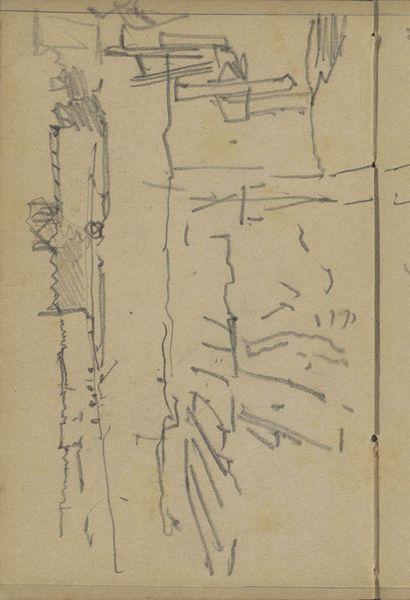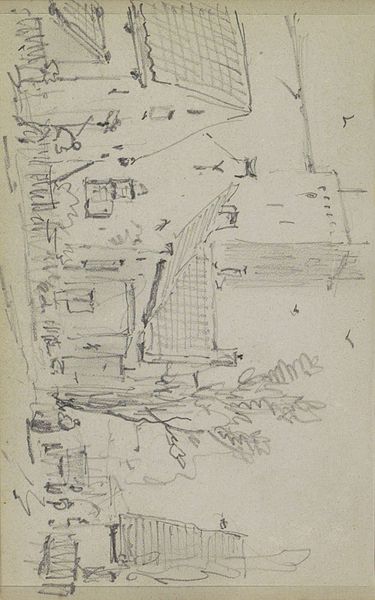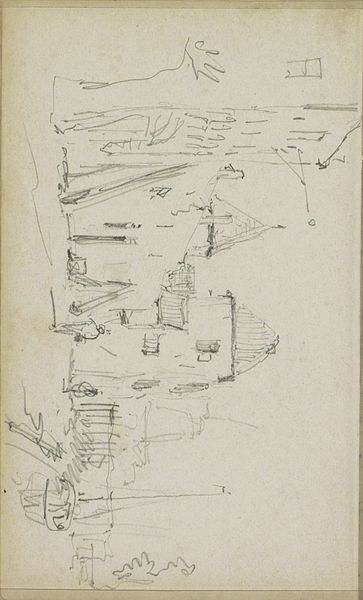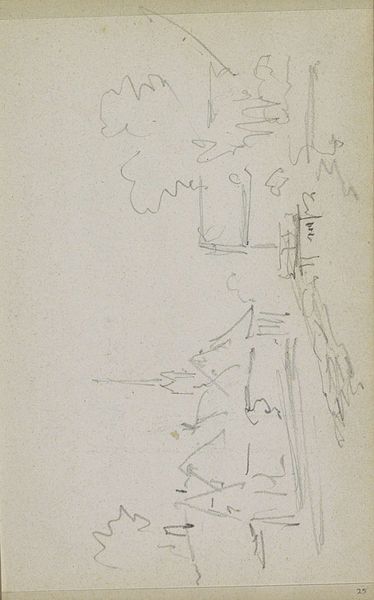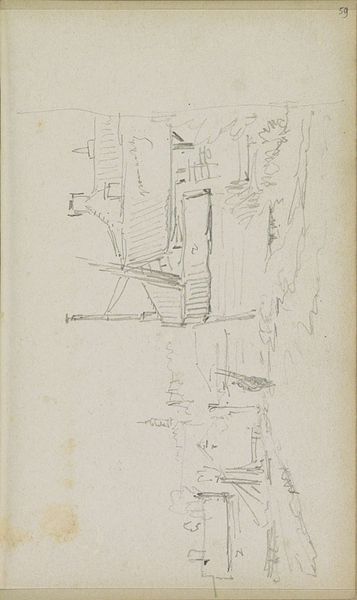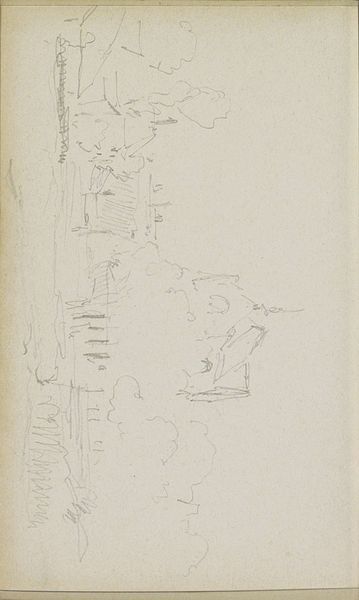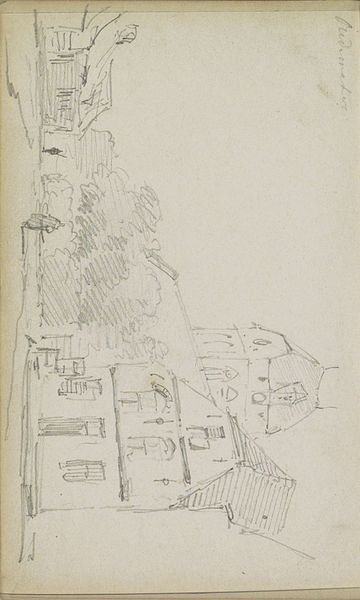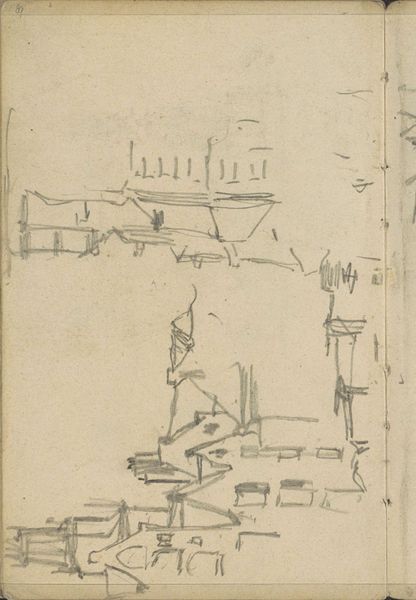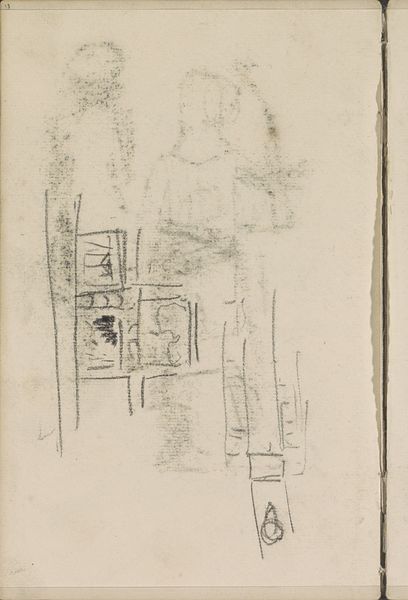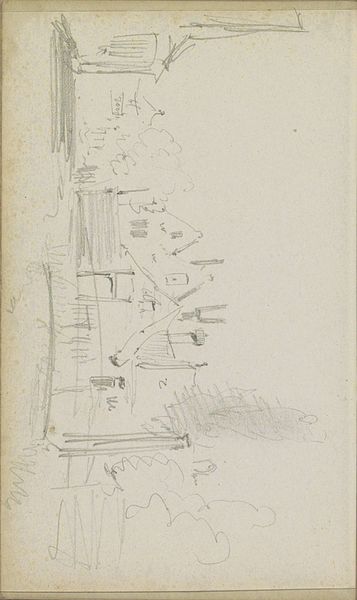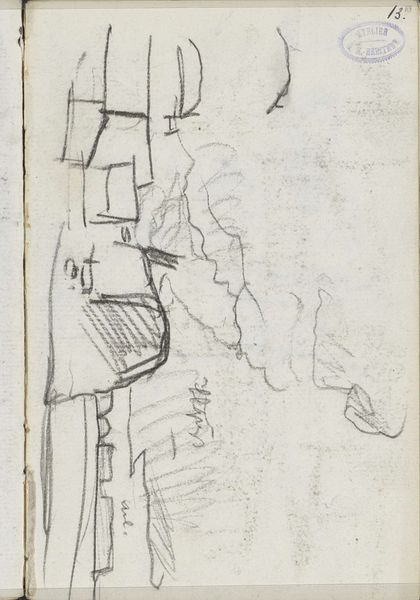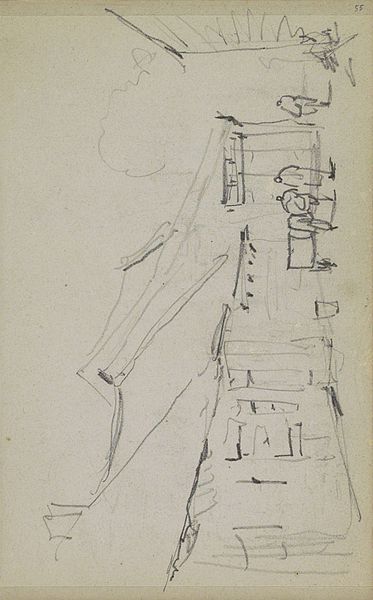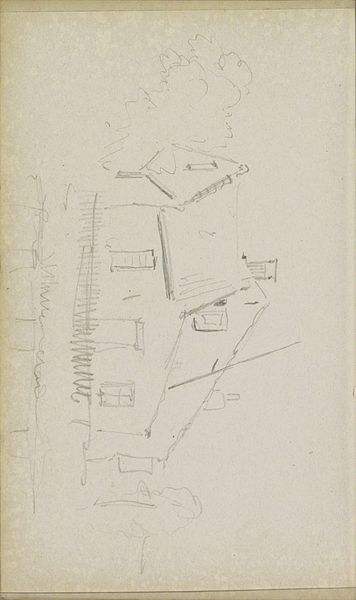
Copyright: Rijks Museum: Open Domain
Editor: Here we have George Hendrik Breitner's "View of the Wolvenstraat in Amsterdam," likely created between 1886 and 1903. It's a graphite and pencil drawing currently housed in the Rijksmuseum. I'm struck by its sketch-like quality, almost like a fleeting impression captured on paper. It feels so immediate, but what is the larger role of sketches like these, in Breitner's broader artistic vision? Curator: That "fleeting impression" is key, but let’s consider the social landscape Breitner was working within. Amsterdam in this period was experiencing rapid urban expansion and social change. How might Breitner’s focus on capturing the everyday life of the city, rather than grand historical scenes, reflect a shift in artistic values and the public's appetite for art? Editor: So, the "everyday" becomes worthy of art? It reminds me of some Impressionist ideas, but grounded in the specifics of Amsterdam. Curator: Exactly. Think about who had access to art, who could afford it, and where they might encounter it. Breitner was part of a movement to bring art closer to the public, depicting the realities they knew and breaking from the academic styles favored by the elite. Do you think his choice of such an unassuming street is part of that mission? Editor: That's an interesting point. Choosing the "Wolvenstraat", it demystifies and emphasizes familiarity. Did he specifically chose places that show every day normalities for the population to identify with? Curator: Yes, and more broadly. It’s part of a trend, showing the streets not as places of grand monuments, but spaces of commerce, labor and ordinary life. Consider too, the implications of drawing versus painting: how does the immediacy and reproducibility of sketches potentially democratize access to imagery? Editor: That definitely expands my thinking of it! The ease of a sketch versus a finished painting also suggests wider audiences can appreciate his work. Curator: Precisely! Breitner's "Gezicht op de Wolvenstraat" then, goes beyond just an innocent snapshot. It engages directly with societal trends, changing access, expectations, and reception of the public toward urban scenery through the new form of expression.
Comments
No comments
Be the first to comment and join the conversation on the ultimate creative platform.
